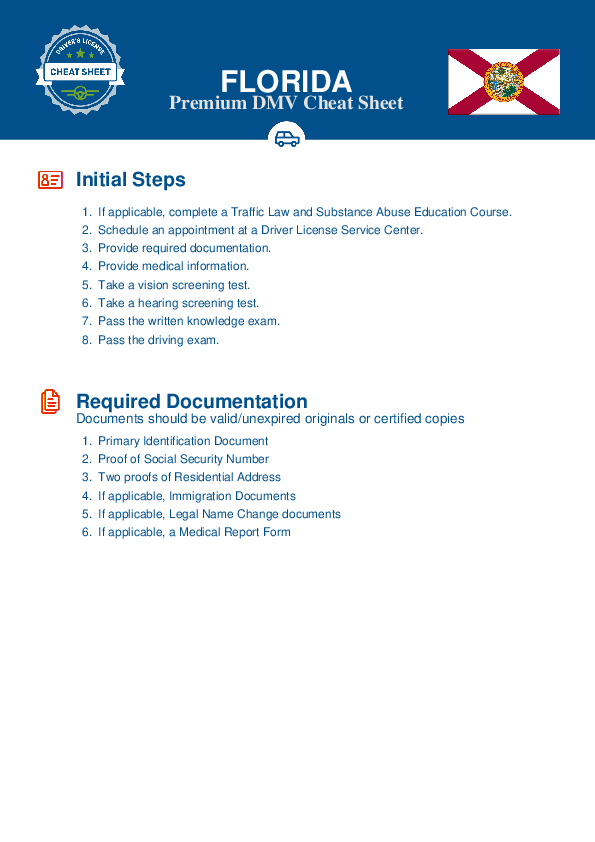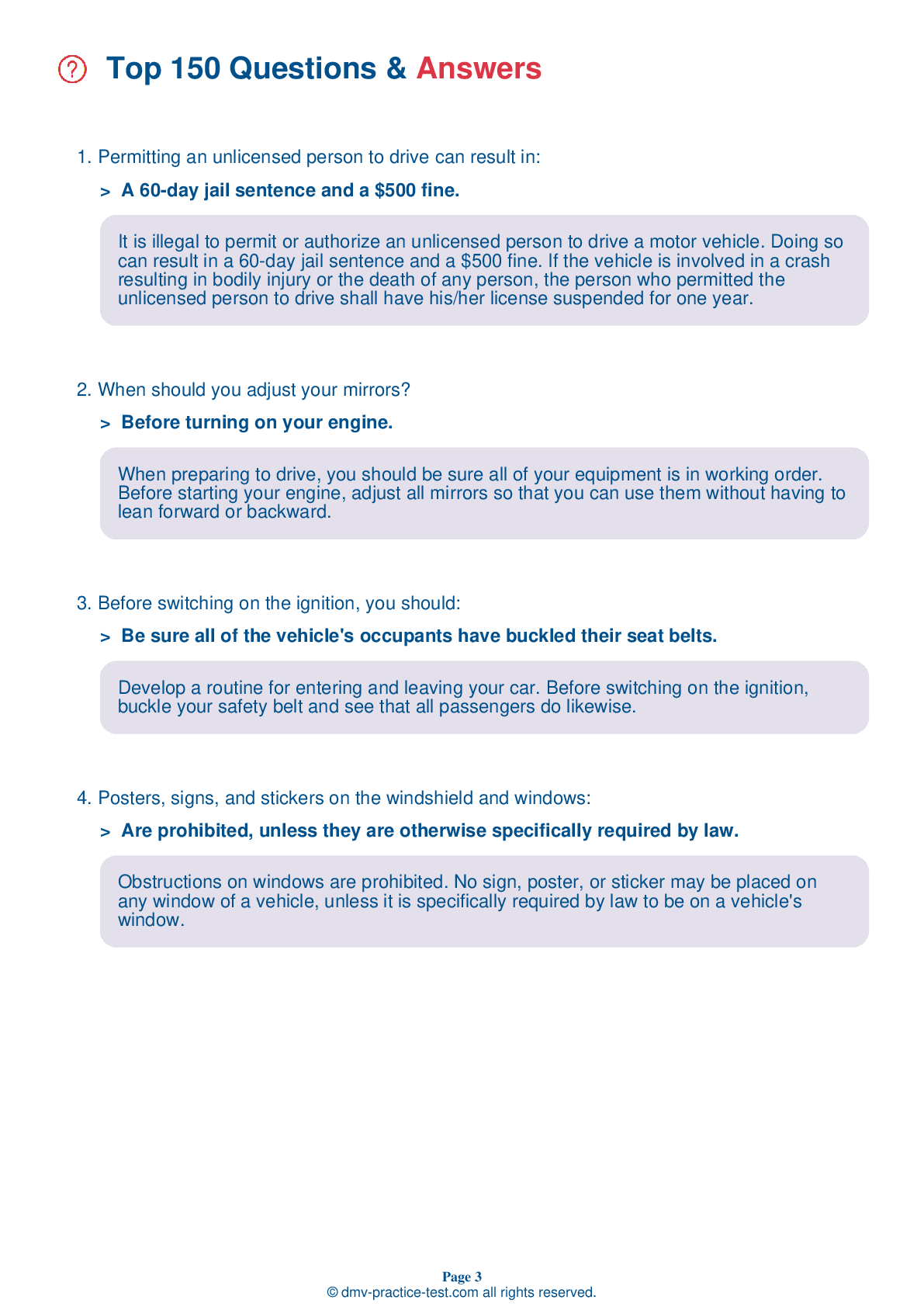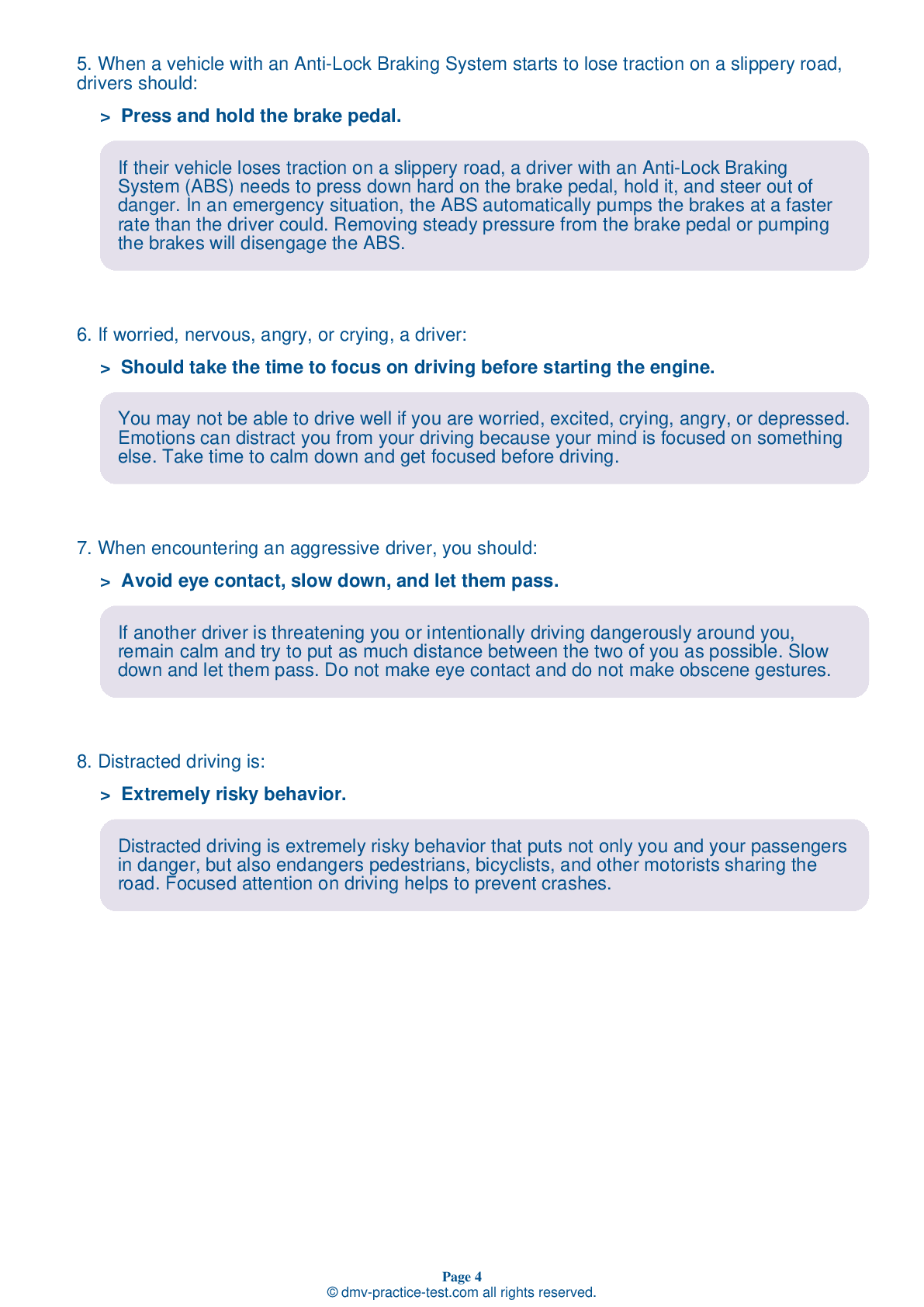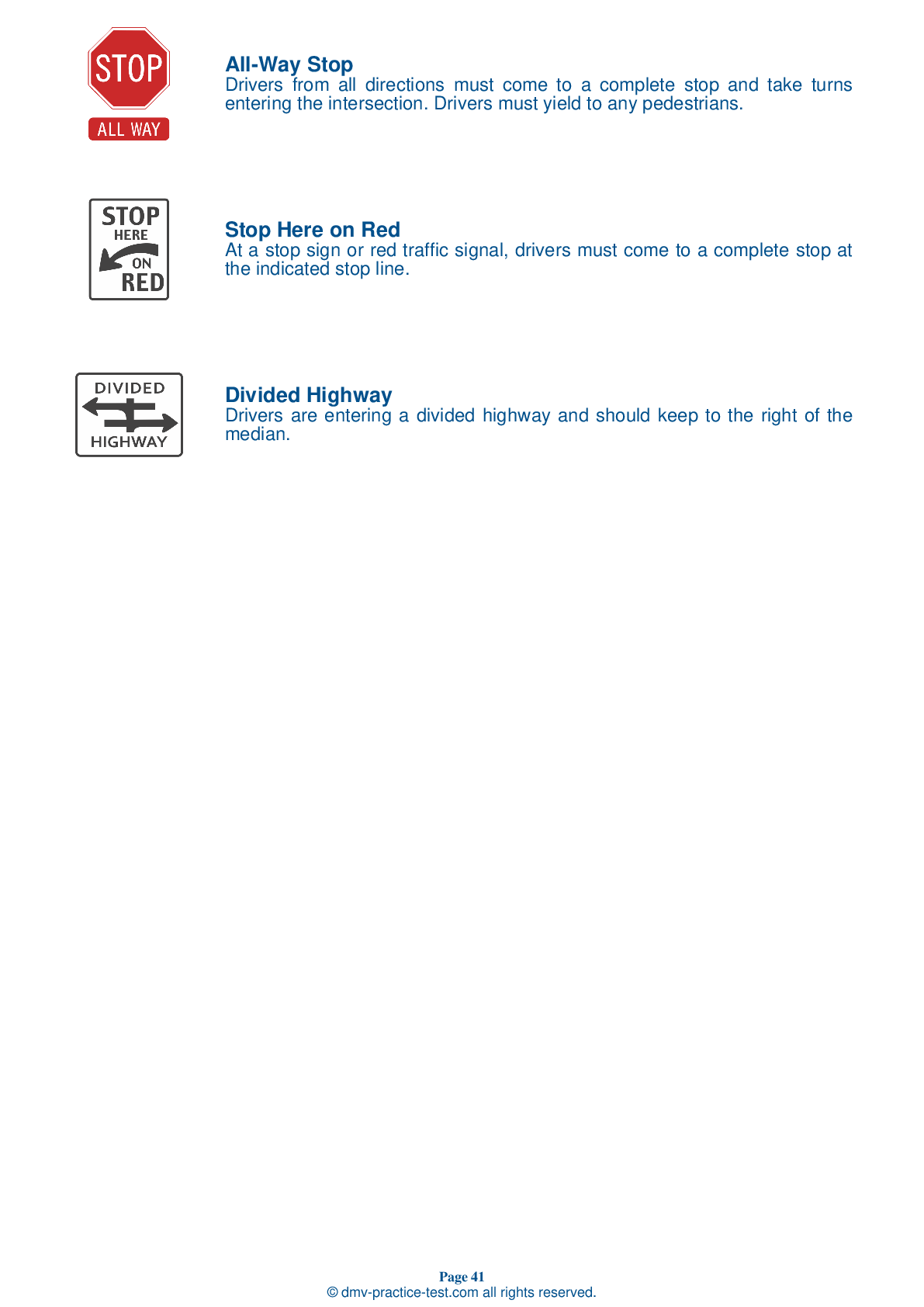FREE Florida DMV Practice Test #19
This set of DMV practise tests for the Florida has been updated for January 2025. It includes questions based on the most important traffic signs and laws for 2025 from the Florida Driver Handbook. To study for the DMV driving permit test and driver's licence exam, use actual questions that are very similar (often identical!) to the DMV driving permit test and driver's licence exam.
Each question on the practise exam has a tip and explanation to help you recall the ideas. Questions about traffic rules, traffic signs, and driving statutes, as well as information from the Driver Handbook, will be included in the written portion of the official DMV test.
You must properly answer 40 of the 50 questions to receive the required passing mark. To help you prepare for your Florida instruction permit or driver's licence, take our DMV practise test.
The DMV exam is offered in a variety of languages.
Using any kind of testing assistance will result in an automatic fail, and the DMV may take additional action against your driver's licence, so stay away from it.
1 . To enter a freeway:
When merging into traffic, you should signal and enter at the same speed that traffic is moving. Always yield to other traffic when entering a roadway.
2 . On slippery roads, you should:
You should slow down at the first sign of rain, snow, or sleet, all of which can create slippery road conditions. When conditions on the road are less than ideal, safety may require that you drive more slowly than the posted speed limit.
3 . A pedestrian starts to cross in front of your vehicle. You should:
Slow down and be prepared to stop whenever you see pedestrians walking on or crossing the roadway. Be particularly careful where children are present. Always yield the right-of-way to a pedestrian crossing in a crosswalk.
4 . You experience an incident at work that has left you feeling angry. When you get to your car, you should:
Persons who are upset, angry, or otherwise distracted by their emotions should take time to cool off before driving a car. Taking out frustrations or anger while driving is exercising very poor judgment and is very dangerous to both the driver and others on the road.
5 . This road sign means:
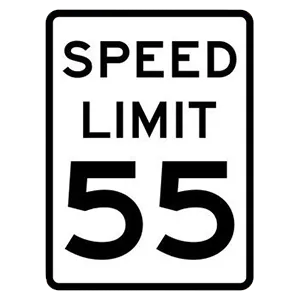
This is a speed limit sign. It indicates the maximum legal speed that you may drive on the road where it is posted. At times of rain, snow, ice, or other less-than-ideal conditions, you may have to drive more slowly than the posted limit.
6 . You may cross solid yellow lines:
As a general rule, broken traffic lines may be crossed but solid lines may not. Solid yellow lines may be crossed only when the driver is making a turn.
7 . When two vehicles enter an intersection from different highways at the same time, which vehicle must yield the right-of-way?
At intersections that are controlled by signs or signals and at intersections that are uncontrolled, the driver on the left must yield the right-of-way to the driver on the right when two vehicles arrive to the intersection at the same time.
See the exact questions that will be on the 2025 Florida DMV exam.
99.2% of people who use the cheat sheet pass the FIRST TIME
LT gives us an insight on how the cheat sheet provided her with all the study questions she needed before taking her test.
Joe initially studied with the handbook and failed his test, he eventually found us online, studied and pass his test the first time around.
